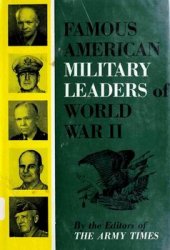The United States Housing Authority (USHA) was created by the United States Housing Act of 1937. The first agency specifically concerned with urban HOUSING, the USHA was charged with clearing slum units and building low-cost, livable housing for low-income Americans. Like many New Deal social programs, the USHA suffered from insufficient funding because of conservative opposition in CONGRESS to such an expansion of the role of the federal government. But while the initial accomplishments of the agency were limited, the USHA did set the precedent for federal efforts to alleviate the shortage of adequate housing in America’s CITIES and for a much larger government role in the postwar period.
The first New Deal efforts to address urban housing came from the PUBLIC WORKS Administration. The agency allocated funds for new home construction in 1933, but the PWA’s director, Harold ICKES, was extremely careful in expending his funds, wanting to make sure every PWA project was an efficient use of government money. By 1937, the Housing Division of the PWA had built only 25,000 new housing units.
Ickes’s caution was not the major impediment to New Deal housing policy. President Franklin D. Roosevelt was not a major supporter of public housing, and the New Deal was interested first and foremost in reviving the sagging home mortgage industry through the Home Owners Loan Corporation and the Federal Housing Administration. Primarily aimed at middle-class homeowners, neither agency actively engaged in promoting affordable home construction in cities. In addition, there was considerable opposition to federally funded public housing by southern Democrats and conservative Republicans with ties to BUSINESS. Neither group saw public housing as benefiting important parts of their constituencies—rural residents of the SoUTH and BANKING and realty interests in the North. But as the shortcomings of the PWA’s Housing
Division came clear by 1935, New York senator Robert F. Wagner began pushing for a more comprehensive public housing program.
Wagner introduced his housing bill several times before he received the reluctant support of President Roosevelt in 1937. As created by the United States Housing Act (sometimes known as the Wagner Public Housing Act) of 1937, the USHA emerged as a compromise agency, with provisions that limited the agency’s spending to 10 percent in any one state to make sure that USHA did not operate only in large northern cities, capped building expenditures per unit, made local financial participation a condition to receiving USHA funds, and cut the initial appropriation to half of the $1 billion Wagner had proposed. But while the record of public housing building by the USHA never produced nearly the amount of low-cost housing units that Wagner had envisioned, the agency did provide the first precedent for federally funded public housing.
The first years of the agency reflected the limitations placed upon the USHA and the lukewarm reception given to public housing. Municipalities and other local units of government who chose to participate were required to set up local housing authorities to administer their public housing as well as financially contribute to the units’ cost. By 1939, there were only 221 local housing authorities created to take advantage of the USHA’s funds and fewer than 150,000 new housing units built, with the building rate decreasing rapidly after 1939, when Congress cut the USHA’s appropriation.
Under President Harry S. Truman, the USHA was given new life in 1949, when recognition of a severe housing shortage created an alliance of urban Democrats and Republicans. But while the 1949 Housing Act allowed for 810,000 new public housing units, just over 200,000 were built by 1960. Overall, the USHA built only one-tenth of the estimated number of public housing units needed from 1939 to 1960. When the Department of Housing and Urban Development (HUD) was created in 1965 as a cabinet-level agency, it reflected the growing role of the federal government in the problems faced by American cities in the latter half of the 20th century.
Further reading: Mark I. Gelfand, A Nation of Cities: The Federal Government and Urban America, 1935-1965 (New York: Oxford University Press, 1975); Gail Radford, Modern Housing for America: Policy Struggles in the New Deal Era (Chicago: University of Chicago Press, 1997).
—Katherine Liapis Segrue




 World History
World History









